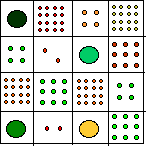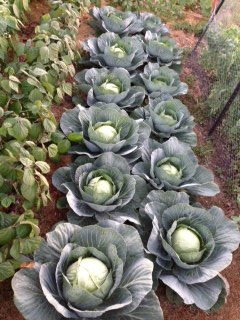by Janel Krezowski
There is a lot of buzz these days about square foot gardening. How to grow as much as possible in a small space is the challenge for many gardeners as most of us don’t have enormous yards to utilize. And even then one can always do more if challenged and motivated.
There are some basic beginnings to be successful and so very many rewards when you are.
There are several very good books available to get one started. But do remember these books are just meant to get the creative juices flowing. The point is to think outside the (square foot) box.
Traditionally, square foot gardening is done in a raised bed of a four foot width and length so that you can reach to the center of the structure to plant, weed and harvest. The area is broken up into a grid of squares (12”x12”). 16 square in a 4 ft bed.
A different vegetable can be planted in each square or block of squares depending on the space required for the individual vegetable. You can plant 16 onions, beets, carrots or radish seeds per square foot, 9 bush beans or spinach, 4 chard, head lettuce or parsley seeds per square foot, 1 cabbage, pepper, eggplant, potato, tomato or broccoli per square foot, or 1 zucchini in 9 square ft (or a 3×3 square). Mix and match your favorite veggies to create your unique square foot garden.
There are as many variations on ways to accomplish square foot gardens as there are gardeners doing it.
Most veggies do very well in the close quarters of square foot gardening. The square foot gardening method can be adapted to the row system with amazing results. For example, plant tomatoes in two long offset rows, 1 foot wide each, leaving every other square foot open, creating a zigzag pattern. Tomatoes need support of some type to keep them off the ground. You can purchase tomato cages at the local gardening center or build your own. Remember to leave a couple feet of space around the rows for weeding and harvesting.
Cabbage adapt to this sequencing very well. And as the leaves provide ground cover over the area there is little need for weeding. (Mulching with grass clippings is also a good weed deterrent and helps hold the moisture in the ground.)
This pattern also works well for zucchini, but remember they need 9 square feet of space for a single zucchini. It is amazing how large plants can get come August.
Plant your carrots, beets and onions in long rows using the spacing of the square foot method with rows planted 3 inches apart. I wouldn’t recommend having your patch more than 4 feet wide because you will need to be able to reach the middle for weeding and thinning. Also, leave walkways between your planting areas for ease in getting around your garden. (You can use grass clippings in your walkways, as well, to keep down weeds and keep shoes clean. However, beware of herbicides in your grass clippings! That is the “Weed” part of “Weed and Feed”. Lawns must be mowed three times before using the clippings in your garden or the herbicide could affect your garden produce. Herbicides can cause problems for a very long time if accidently applied to your garden.
Cucumbers and squash are crops that need lots of space. They can be planted in a row with seeds 6 inches apart and allowed to spread or you can train them to climb on a trellis or fence creating a vertical garden. A vertical garden has a lot of eye appeal but can be a challenge with the winds of Montana.
You can plant vegetables between flowers in flower beds using the square foot method. Vegetables can add eye appeal to flower bed as well as provide fresh veggies for your table. There is nothing the same as a vine ripened garden tomato or a fresh picked strawberry.
Gardens also need fertilizer. When using the square food garden method fertilizer is very important due to the heavy production. Always add organic matter to your garden and commercial or organic fertilizers to supplement. It is usually better to use a mild fertilizer more often than a strong one early in the season. However, this is a matter of preference.
Water is a very important step to successful gardening. With hot temperatures, you may need to water every day. Mulching helps hold moisture in the ground and can be applied as soon as plants are fully emerged. It is more important to deep water less frequently than to lightly water every day.
Advantages to gardening in the square are many. First of all, it requires far less space than traditional gardening by the row. It also reduces weeding. It requires less water. It requires far less time. The bounty of the garden is immeasurable in benefits to health and it keeps you active. More than all that it can be a fun project for the whole family. Children love to play in the dirt and playing in the dirt has many health benefits for children and adults.
I do hope this has been helpful and gets you started. Don’t be afraid to try new variations. Life is a garden……..Dig it!!!!!
Some Resources to get you started
http://squarefootgardening.org/square-foot-gardening-method


Great information! Thanks for sharing. I’ve been using the wide row or patch method of gardening combined with some vegetables put in smaller rows. It produces well. I can incorporate some of this method into my planting too! Thanks again for sharing!